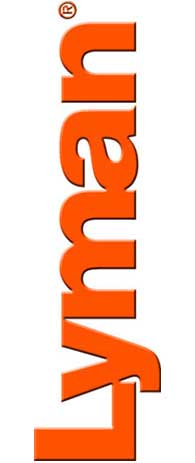Intro To Reloading
There are several reasons to Reload Ammunition.
Typically, reloading your own ammunition is significantly less expensive than buying
factory ammunition. Usually your savings are between 25%-60%.

Another reason to reload is for customization. For hunting and competitive shooting, you can assemble ammunition specific to a task, or for a specific firearm, that frequently cannot be bought.
As an example, there are a variety of custom projectiles available for hunting big game that are simply unavailable in factory ammunition.
Most competitive handgun shooters need ammunition with softer, easier-to-ignite primers, as the firearms have been modified by a gunsmith to provide a lighter trigger pull.
Some shooting spots require a power factor of competitor’s ammunition, power factor being the bullet weight times the velocity, with perhaps another factor introduced. Factory ammunition is often more powerful than needed in some calibers, in others it is not powerful enough.

Improving Accuracy
- Many consider reloading to be an enjoyable pastime by itself.
- They try different combinations of brass case, projectile, powder, primer, variations in projectile seating depth, etc. to get the best possible accuracy.
Ammunition Independence
During times of higher ammunition demand, manufacturers will curtail production of less popular cartridges to meet demand for cartridges higher in demand. This is especially true for hunting cartridges that have fallen out of favor and are no longer chambered in popular firearms. These periods can and have lasted for several years.
The Federal 1968 Gun Control Act required record keeping of all ammunition purchases, but was repealed in 1986. However, several States have imposed their own regulations on the acquisition of ammunition, prohibiting direct sales of ammunition to their citizens by imposing mandatory licensing and background check requirements on each ammunition purchase.
Having the ability to load your own ammunition will keep you from having a bare cupboard.

Safety
- When reloading, ALWAYS wear safety glasses and hearing protection.
- Never force an operating handle on a loader. If the effort needed to cycle the loader drastically changes, don’t force it.
- Stop and determine the cause. Don’t smoke, watch TV or cat videos while loading. Store primers and powder out of reach of children and away from heat or open flames.

Where to Reload
- If you have space for a bench, it should be typically between 36 and 42 inches tall. Ideally, you can bolt the machine permanently to the work surface. However, you can also bolt the loader to a 2×10″ plant, at least 18″ long, and use a couple of large cast iron C-clamps to temporarily mount the loader to a work surface, such as a bar or table.
- Avoid positioning the machine directly under florescent lights, as any accidental primer detonation will result in glass particles raining down, a greater hazard than the primers.

Components
- Metallic ammunition, as for rifles and handguns, consists of four components.
- Brass case
- Primer
- Powder
- Projectile
- The case is a container, the primer is pressed into the base of the case, powder is poured inside the case , the projectile, also known as a bullet, is pressed into the top of the case to seal it into one unit, called a cartridge.
The Steps to Reloading are
- Case Preparation
- Resizing, Depriming, and Repriming
- Powder Drop and Case Flaring
- Bullet Seating and Crimping
- Post-loading inspection
Save Your Brass
- When Reloading ammunition, you typically start out with empty, fired cases. These can typically be reused anywhere from five to 20 times or more, depending upon the specific cartridge. This empty case must.
Case Preparation
It’s a good idea to clean cases to get dirt, grit and chunks off the outside of the cases. Bright n’ Shiny doesn’t hurt, but isn’t necessary. Clean brass cases are easier to inspect. Corncob is a better all-around media. Walnut has a shorter lifespan, is too abrasive to polish, and is best restricted to stained or tarnished cases. Use corncob for general cleaning and polishing. A vibratory cleaner is fastest for tumbling brass.
If you have a vibratory case cleaner, then you can safely tumble loaded ammo in plain corncob for about 10-15 minutes to remove case and bullet lube. I suggest not using any polishing additives containing ammonia, such as Brasso, as the ammonia weakens the brass cases.
For smokeless powder, there is no reason to clean primer pockets. It’s a waste of time and adds no quality. Current priming compounds are sufficiently clean burning that it isn’t a problem of residue to prevent primers from seating fully.


- If you have picked up someone else’s empty cases, there may be empty cases that are not reloadable mixed in among the reloadable cases. Cases made of steel or aluminum are generally considered to be non-reloadable, as they are usually Berdan – primed.
- Berdan primers have small, offset flash holes, and are different dimensionally from U.S. Boxer primers. Some handgun brass has an internal step. This brass has a reduced case capacity, and no safe loading data is currently available.
- Use corncob for general cleaning and polishing. A vibratory cleaner is fastest for tumbling brass.
- I suggest not using any polishing additives containing ammonia, such as Brasso, as the ammonia weakens the brass case.
- There is no reason to clean primer pockets, unless you are unloading black powder. It’s a waste of time and add no quality. Current priming compounds are sufficiently clean burning that isn’t a problem of residue to prevent primers from seating fully.

- Do not deprime cases prior to cleaning with dry media. There’s not enough media movement to clean the primer pockets and media gets caught in the flash hole.
- If not removed, media can cause misfires, failures to ignite powder, which isn’t any fun.
- After cleaning, the cases need to be rinsed, the stainless steel pins separated, and the cases need to be dried before they can be reloaded. Dry cleaning is usually faster, with less preparation and case handling needed.
- Corncob is a better all-around cleaning and polishing dry media. Walnut has a shorter lifespan, is too abrasive to polish, and is best restricted to stained or tarnished cases.
- After the empty cases are clean, inspect the cases for defects, which render the cases unsafe to reload.
- Sometimes brass cases will develop cracks, or there might be debris inside the case, which can include, but is not limited to, mud, spider webs, wasp nests, and smaller-diameter cases stuck inside larger cases after tumbling.
- Straight-wall cases, regardless of being fired in a revolver or a rifle, do not require trimming. Straight-wall cases get shorter over time, not longer. With extensive use, cases can get uneven, but separate crimp die will ameliorate this problem.
- If loading a bottleneck rifle cartridge, cases eventually have to be trimmed to reduce their Length. Upon firing, brass flows from the base of the case towards the mouth. You must measure the case length AFTER resizing to see if the case must be trimmed. Most bottleneck cartridges can be fired two or three times before trimming is necessary.
- Now that we have cleaned and separated out the reloadable cases, we can begin the reloading process.

Resizing, Depriming, & Repriming
- The first station on our reloader is going to push out the used primer, reform the fired case so it will fit into a firearm chamber and hold a bullet tightly.
- Upon firing, a case expands to fill the chamber; the chamber is always slightly larger than the loaded ammunition.
- Therefore, the fired case gets resized and deprimed.
- Bottleneck and tapered cases require lube to be applied to the exterior of the cases prior to resizing.
- The reason for this is the cases require sufficient amount of pressure to resize, that if the cases are not lubed, then they can stick in the size die.

- Often a stuck case will be stuck sufficiently that the rim will rip off before the case can be extracted. A stuck-case-removal tool is usually necessary to extract the stuck case from the die without damaging the die.
- Most modern dies resize and deprime at the same time. Next, a new primer is pressed into the empty primer pocket. Most reloaders seat primers by feel.
- Primers are seated slightly below flush so that casual handling of the ammunition wont accidentally set off the cartridge, as well as to ensure reliable ignition.
- On metallic cartridges, primers are usually seated about .002″-.009″ below flush. If excess pressure is applied, you can crack the primer pellet, which will cause the primer to fail.


How to Use a Primer Flip Tray Properly
Dump primers out of their box onto the side of the tray with concentric rings. Gently agitate the tray in a swirling motion until all of the primers are flat. It doesn’t matter how they’re oriented. Use the primer pickup tube and press the tip over all the primers that are shiny side up. Now, put the lid on the tray, turn it over and pick up the remaining primers. There’s no reason to continuously agitate the tray until all the primers are correctly oriented. That’s why it’s called a primer FLIP tray.
Powder Drop & Flaring Cases
- Now powder is dumped into the sized, primed case.
- The amount of powder that is put into a case depends upon the specific cartridge, the brand and type of powder being used and the weight of the projectile.
- Fortunately, the bullet and powder manufacturers make available reloading manuals for reloaders to use. Again, this is the equivalent of a recipe book for reloaders.
- By the way, two loading manuals are better than one, three are better than two, etc. You can’t have TOO MANY loading manuals!
- Most powder manufacturers use different methods of determining minimum and
maximum powder charges, so it’s a good idea to review several manuals if possible.

Powder Scales
The differences between balance-beam and digital scales are:
- A balance-bean scale that has sliding poises, most use magnetic eddy currents to dampen the oscillation of the beam.
- A digital scale uses multiple land cells to electronically convert their deflection into a weight. Digital scales achieve a final weight much faster, and being digital are easier for some to read.
- They are NOT more accurate than a balance-beam scale. The industry standard for accuracy in either type is +/- 0.1 grain. Avoid the digital scale with advertised accuracy of +/- 0.2 grains, because it is not adequate for reloading purposes.


Powder Drop & Flaring Cases
- Straight-wall and tapered cases should have the mouths flared slightly to aid in seating bullets without shaving material from the bullet. Bottleneck cases generally do not get flared.
- For bottleneck cartridges, instead of flaring the case mouth, the case is chamfered using a specialized tool.
- Flare cases approximately .010” larger than the sized, unflawed case mouth measures.
- Always verify the powder charge weight using a scale, no matter what method you use to drop
powder. - Do not go with powder charges lighter than the starting load in a manual, or heavier that the
maximum charge listed.


Bullet Seating & Crimping
- Next, a projectile is inserted into the case mouth. For some types of cases, notably straight-wall cases, the case mouth must be flared to speed up pressing the projectile into the case.
- The bullet must be pressed in to a specific depth; too deep and the pressures can exceed safe levels, not deep enough and the loaded ammunition may not fit into the chamber of the firearm.
Cannelured Bullets
- Most revolver and some semiautomatic rifle bullets have a crimp groove to crimp into.
- This is a good guide to bullet eating depth.
- Again, the loading manual has the information as to what length is recommended.

Bullet Seating & Crimping
- After seating the projectile into the case, a separate operation to crimp
the cartridge mouth may be necessary or desired. - This is typically needed on cases that have the mouth flared previously.
- Most rifle cartridges do not have any crimp applied. Exceptions to this are rifle ammunition meant for tubular magazines (commonly lever-action rifles), ammunition for semiautomatic rifles (so that the bullet doesn’t get pushed back into the case when it is fed into the chamber of a firearm).
- Match rifle ammunition is usually not crimped, so as to not deform the bullet. Most handgun ammunition is crimped; revolver ammunition is usually roll crimped to prevent the projectile from working forward under recoil; a good roll crimp prevents the bullet from getting pushed back into the case up to 35 lbs. of pressure.
- Be sure to crimp bullets in place, especially for use tubular-magazine rifles. Use a bullet with a crimp groove. Run your thumbnail down the case mouth. If you can’t catch the edge of the case mouth, you have enough crimp. Sufficient crimp means that a bullet won’t collapse into the case, which will cause most firearms to quit.
- On handgun ammo, a decent crimp leads to cleaner fired cases and more consistent velocities. Semiautomatic handgun ammunition is taper crimped to squeeze the case snug against a bullet so that it doesn’t get pushed back into the case as the ammunition is fed into the chamber, while leaving the edge of the case mouth in place to prevent the ammunition from going too far into the chamber.
- Be aware that the crimp is NOT what holds a bullet in the case. When the case is sized, it is sized down enough that the bullet is a press-fit into the case. This case tension is what holds the bullet in place.
- There are two predominant styles of crimps;
- a roll crimp, where the case is physically curled into a crimp groove on the projectile,
- and a taper crimp, where the case mouth is squeezed against the sides of the projectile.

Post-Reloading Inspection
- If brass was lubed, remove lube either by wiping or tumbling. If you have a vibratory case cleaner, you can safely tumble loaded ammo in plain corncob for about 10- 15 minutes to remove case and bullet lube.
- I suggest not using any polishing additives. Inspect the heads of cases to make sure sure that primers are present and seated right side up. Use a case gage to ensure the cartridges are free of dimensional imperfections.
- Check for wrinkles in the case neck.
- Discard any rounds that aren’t perfect.
- Cartridge inspection gauges make this process faster and easier.

- Label your ammunition Boxes with the loading data used.

- Storing loaded ammunition in plastic boxes makes it easier to inspect primers, and easier to
transport ammunition.

Components
- Brass Case
- Primer
- Powder
- Projectile

Case Bases
- There are four styles of case bases; rimmed, which has a flange to limit how far a cartridge can go into the chamber, semirimmed, which has a minuscule rim to aid extraction, and rimless,
which usually has a small groove turned in the base for extracting the case from the chamber. - Finally, we have belted, which have a step in front of the extractor groove that acts like a case rim.




Case Types





Cartridges
- Cartridges can have a mix of bases and upper portions, examples such as .30-30 Winchester, which has a rimmed base and a bottleneck shape to the body; .38 Special, which has a rimmed base and a straight-wall case body; the .30-06, which has a rimless base and a bottleneck shape to the body; .45 ACP, which has a rimless base and straight-wall case body; .30 Carbine, which has a rimless base and a tapered case body, and 45-70, which has rimmed base and a tapered body. .32 ACP, .38 Super and .220 Swift are examples of semi-rimmed cases. Rebated cases can be straight wall, like 50 Action Express, or bottleneck, such as 22 Nosler
- More recently developed high pressure cartridges are doing away with the belt. There are three styles of upper portions of the case; straight wall, where the case mouth and base of the case are the same diameter, tapered, where the mouth is smaller, and the case tapers outward to a large diameter base, and bottleneck, where the neck portion that holds the bullet is straight, then steps back distinctly to a larger diameter at a point where the bullet stops inside the case, down to the base.
Primer
- The primer is a small amount of impact-sensitive explosive, inserted into a soft brass cup, with
a perforated piece of brass called an anvil positioned on top of the priming compound. When the firing pin of a firearm impacts the primer, the priming compound is rapidly compressed between the primer cup and the anvil, providing the impact to set off the priming compound. - The hot flash from the exploding primer goes through a small hole, igniting the powder charge. There are four major groups of primers for metallic cartridges, small pistol, large pistol, small rifle and large rifle. Each group is also offered in a standard and a magnum primer, with magnum primers providing a hotter ignition for use with certain powders or larger-volume cases.
- Different brands of primers have different degrees of hardness. If your firearm has had an action job to reduce the trigger pull, or the factory springs have been replaced, you may be limited to using the softer primers, such as Federal or Winchester, to ensure reliable ignition.
- Some semiautomatic rifles require use of a harder primer, such as a CCI or Remington, for safety reasons. Many semiautomatic rifles have free-floating firing pins. Use of a too-soft primer can sometimes result in an out-of-battery ignition, as the firing pin moves forward as the bolt closes and locks.
- All primers require care when handling. Don’t do anything to a primer that might become an improvised firing pin. If a primer fails to ignite on the first strike, but goes off on the second strike, this indicates the primer was not seated deep enough initially.

Large Primer Difference
- Be aware that large rifle and large pistol primers are not interchangeable. Large rifle primers are typically about .008” taller than large pistol primers, and won’t seat flush in cases cut for large pistol primers.
- Even if fired in rifles, cartridges such as .44-40 and .44 Magnum use large pistol- not large rifle primers.


How to use a Primer Flip Tray Properly
- Dump primers out of their box onto the side of the tray with concentric rings. Gently agitate the tray in a swirling motion until all of the primers are flat. It doesn’t matter how they’re oriented.
- Use the primer pickup tube and press the tip over all the primers that are shiny side up. Now, put the lid on the tray, turn it over and pick up the remaining primers. There’s no reason to continuously agitate the tray until all the primers are correctly oriented. That’s why it’s called a primer FLIP tray.
Powder
- Smokeless gunpowder is not an explosive; it is described as a solid propellant. When smokeless powder is ignited it produces a large volume of expanding exhaust gasses. When contained inside of a cartridge case, the gasses are temporarily trapped by the bullet, building up tens of thousands of pounds of pressure. This causes the bullet to forced out of the front of the case and through the
barrel of the firearm, as this if the path of least resistance. - If powder is ignited outside of a case, it burns like paper, only faster. There are over 100 different varieties of gunpowder, differing by density, shape and burning rate. In general, handguns use faster-burning powders than rifle cartridges do. Most handguns have an upper limit to the projectile velocity of 1200-1600 feet per second. Most rifle projectiles travel significantly faster, between 2200-4200 feet per second. Powder and ammunition manufacturers use sophisticated equipment to determine how much of what type of powder is correct for a given cartridge and bullet type and weight. For re-loaders, they make this information available in a reloading manual. It is a cookbook for reloading.
Powder Drop & Flaring Cases
- Powders vary by shape and density. Most reloaders use a powder measure to dispense powder. This requires the use of a powder scale to regulate the measure as to how much powder it dispenses each time.
- Most powder measures intended for use with metallic cartridges are adjustable by volume; this volume must be adjusted to match a specific weight of a particular powder, using a powder scale.
- Powder is weighted in units called grains, there being 7000 grains per pound. Powder charges are figured to the 1/10th of a grain in weight.



Powder
- If properly stored, avoiding extreme temperature variations, powder has a shelf life of over 60 years.
- When it goes bad, powder has a bitter, acrid odor.
- Powder stored in metal cans can become contaminated with rust from oxidation of the inside of the powder can.
- The original Plastic or cardboard powder-storage containers are best.
Powder Temperature Sensitivity
- Be aware that many powders are temperature sensitive. Since your ammunition has to be loaded to meet a power factor, you are advised to chronograph your ammunition at both temperature extremes you might shoot at, to see how your velocity will change.
- Some powders decrease in velocity as they reduce in temperature, others increase. It is quite possible to fail to achieve power factor due to temperature changes.
Projectile
- The projectile is the only portion of the cartridge to be driven down the barrel. Most projectiles are made of a lead alloy, sometimes with a copper alloy covering the lead alloy.
- These are called jacketed projectiles. There are some special-purpose projectiles made of a solid copper or bronze alloy. These are encountered either in custom hunting ammunition or in law enforcement handgun ammunition for piercing a soft body armor, depending on the alloy and cartridge.






Cowboy Action Shooting
- Hodgdon Titegroup and IMR Trail Boss are probably two of the better powders currently available for loading handgun cases, as they are formulated to be nonposition- sensitive, I.e. the velocity of the bullet won’t change with the position of the powder in the case.
- The cleanest powders I have experience with are Hodgdon clays and Vihtavouri 320 (a single-base powder).
- A new IMR powder, Trail Boss, is designed specifically for low-velocity lead-bullet loads suitable for Cowboy Action Shooting. It is primarily a pistol powder, but has some applications in low-velocity lead-bullet rifle loads. It is based on a whole new technology which allows very high loading density, good flow through powder measures, stability in severe temperature variations and most importantly, additional safety to the band leaders. Data available from www.imrpowder.com
- To safely obtain lower velocities, use shorter cases to reduce case volume for safety.
- .45 Colt – use .45 S&W
- .44 Magnum, .44 Special – use .44 Russian
- .357 Magnum, .38 Special – use .38 Long Colt.
- Usually .38 Long Colt can still be loaded using .38/357 dies -.38 Short Colt cannot.
- Lower bullet velocities dictate accuracy, less leading with a softer bullet and softer lubes. Hard-cast bullets at low velocity and pressure frequently fail to “bump up” and obturate the bore, causing gas leaks around the sides, melting lead, which then condenses in the forcing cone and barrel.
- Brinnell scale 8-10 is ideal for under 1000 FPS. Most hardcast bullets for Cowboy Action Shooting.
Precision Rifle Shooting
- Precision rifle shooting requires the use of higher-quality components, and more case preparation. Precision rifle shooting is frequently shot at ranges beyond the typical hunting or even service rifle distances – shot out to 1000-1300 yards are not uncommon.
- For example, even after buying match brass and bullets, you still need to weigh and measure them, to sort out any that fall outside of a small range of tolerances.
- Primers pockets are cut to ensure uniform primer seating, flash holes are deburred to aid in uniform powder ignition. And case necks are turned to give uniform neck tension on the bullet. If using extruded powder, charges are often weighed, instead of being dispensed using a measure.
- A micrometer bullet seater is used so small adjustments can be made to bullet seating depth. Bushing-type neck sizing dies are used so you can experiment with different neck tensions to hold the bullet in order to determine the effect on accuracy.





